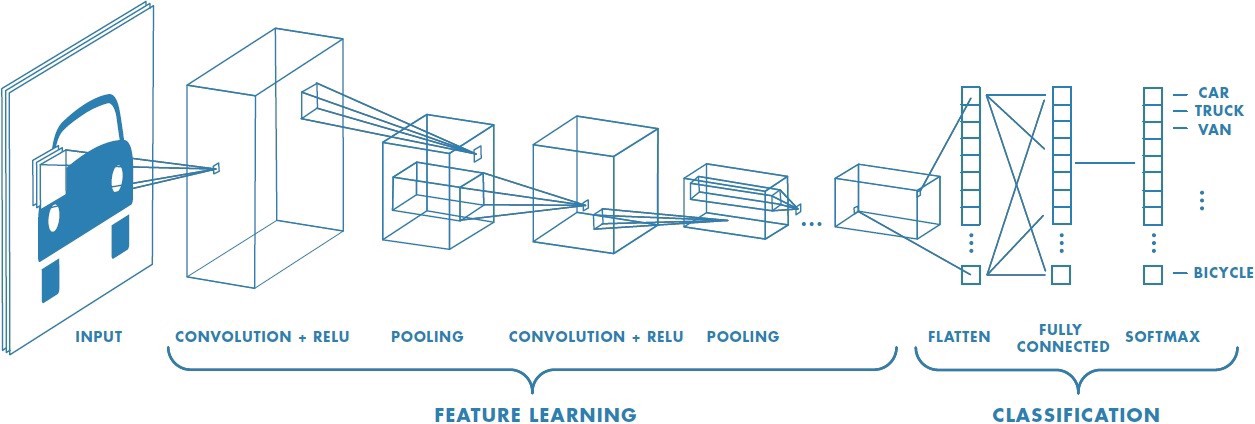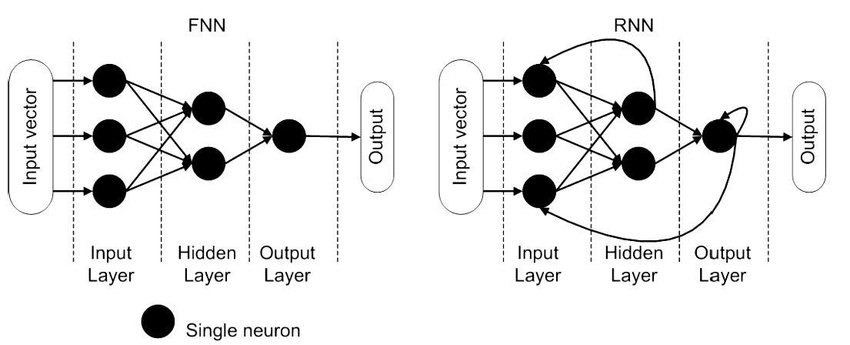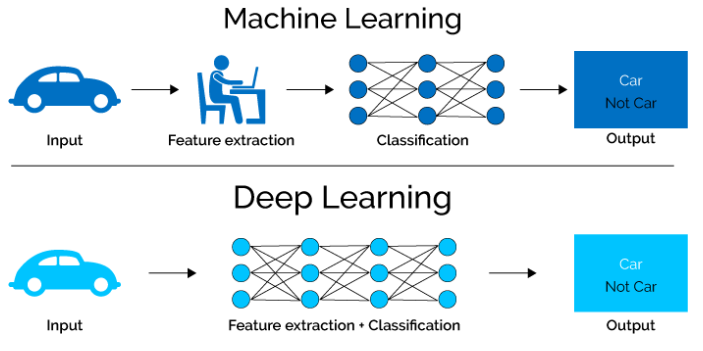16. DeepLearning Overview
02 Oct 2019 | Reinforcement Learning
Deep Learning
- Deep Learning is a name for Neural network
- in its simplest form, it’s just a bunch of logistic regressions stacked together
- layers in between input and output are called hidden leyers
- we call this network a “feedforward neural network”
- Nonlinear activation functions (f) make it a nonlinear function approximator

Training
- Despite the complexity, training hasn’t changed since logistic regression, we still just do gradient descent

- problem: not as robust with deep networks. sensitive to hyperparameters:
- Learning rate, # hidden units, # hidden layers, activation fcn, optimizer(AdaGrad, RMSprop, Adam, etc) which have their own hyperparameters
- we won’t know what works until we try
Feature Engineering
- As with all ML models, input is a feature vector x
- Neural networks are nice because they save us from having to do lots of manual feature engineering
- Nonlinear characteristics of NNs have been shown to learn features automatically and hierarchically between layers
- Ex
- layer 1 : edges
- layer 2 : groups of edges
- layer 3 : eye, nose, lips, ears
- layer 4 : entire faces
Working with images
- as a human, one of our main sensory(感觉的) input
- as a robot navigating the real-world, images are also one of our main sensory input
- images also make up states in video games
- thus we’ll need to know how to work with images to play Atary environments in Open Gym
- Luckily we have tools for this: Convolutional neural network
- Does 2-D Convolutions before the fully-connected layers
- (All layers in a feedforward network are fully-connected)
- Convolutional Layers have filter which are mush smaller than the image
- Also, instead of working with 1-D feature vectors, we work with the 2-D image directly(3-D if color)

- idea: slide kernal/filter across the image and multiply by a patch to get output
- Aside from the sliding, it works exactly like a fully-connected layer
- Multiplication and nonlinear activation
- Concept of shared weights
- smaller # of parameters, takes up less space and trains faster

Working with sequences
- In RL, not only are we interested in images, but sequences too
- Main tool: recurrent neural networks
- Episode is made of sequence of states, actions and rewards
- Any Network where a node loops back to an earlier node is recurrent

- Typically don’t think of individual recurrent connections, but recurrent layers or units, e.g LSTM or GRU
- we think of them as black boxs: input -> box -> outpu
- since output depends on previous inputs, it means the black box has “memory”
- useful because we can make decisions based on previous frames/ states

Classification vs Regression
- we mostly focused on multi-class classification
- softmax on multiple output nodes + cross entropy
- in RL we want to predict a real-value scalar(the value function)
- one output node + squared error
Reference:
Artificial Intelligence Reinforcement Learning
Deep Learning
- Deep Learning is a name for Neural network
- in its simplest form, it’s just a bunch of logistic regressions stacked together
- layers in between input and output are called hidden leyers
- we call this network a “feedforward neural network”
- Nonlinear activation functions (f) make it a nonlinear function approximator

Training
- Despite the complexity, training hasn’t changed since logistic regression, we still just do gradient descent

- problem: not as robust with deep networks. sensitive to hyperparameters:
- Learning rate, # hidden units, # hidden layers, activation fcn, optimizer(AdaGrad, RMSprop, Adam, etc) which have their own hyperparameters
- we won’t know what works until we try
Feature Engineering
- As with all ML models, input is a feature vector x
- Neural networks are nice because they save us from having to do lots of manual feature engineering
- Nonlinear characteristics of NNs have been shown to learn features automatically and hierarchically between layers
- Ex
- layer 1 : edges
- layer 2 : groups of edges
- layer 3 : eye, nose, lips, ears
- layer 4 : entire faces
Working with images
- as a human, one of our main sensory(感觉的) input
- as a robot navigating the real-world, images are also one of our main sensory input
- images also make up states in video games
- thus we’ll need to know how to work with images to play Atary environments in Open Gym
- Luckily we have tools for this: Convolutional neural network
- Does 2-D Convolutions before the fully-connected layers
- (All layers in a feedforward network are fully-connected)
- Convolutional Layers have filter which are mush smaller than the image
- Also, instead of working with 1-D feature vectors, we work with the 2-D image directly(3-D if color)

- idea: slide kernal/filter across the image and multiply by a patch to get output
- Aside from the sliding, it works exactly like a fully-connected layer
- Multiplication and nonlinear activation
- Concept of shared weights
- smaller # of parameters, takes up less space and trains faster

Working with sequences
- In RL, not only are we interested in images, but sequences too
- Main tool: recurrent neural networks
- Episode is made of sequence of states, actions and rewards
- Any Network where a node loops back to an earlier node is recurrent

- Typically don’t think of individual recurrent connections, but recurrent layers or units, e.g LSTM or GRU
- we think of them as black boxs: input -> box -> outpu
- since output depends on previous inputs, it means the black box has “memory”
- useful because we can make decisions based on previous frames/ states

Classification vs Regression
- we mostly focused on multi-class classification
- softmax on multiple output nodes + cross entropy
- in RL we want to predict a real-value scalar(the value function)
- one output node + squared error
Reference:
Artificial Intelligence Reinforcement Learning


Comments